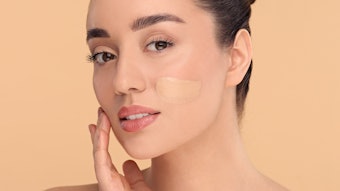
The human body lives in symbiosis with massive amounts of beneficial microorganisms, which enable humans to maintain their health on a daily basis. This microflora is called the human microbiote. It accounts for almost ten times as many cells as in the rest of the body, while representing orders of magnitude more genes than are contained in the human genome.
The human skin being the largest exposed organ, is also one of the largest microbial habitats. The human skin microbiote has a known symbiotic population from 100 to more than 10,000,000 cells per cm2 depending on the body area.1 The mutualistic interaction between humans and skin microflora is a result of long co-evolutionary processes involving the skin as the physical interface of the body with its outside environment. The traditional microbiology-based methods do not offer a full access and understanding to the skin microbiote. It is estimated that 50 to 90% of existing skin microorganisms cannot be cultivated in a laboratory.2
A recent high throughput DNA analysis technology (called metagenomics) has enabled the personal care industry to gain a more exhaustive vision of the skin microbiote, and it is just beginning to understand the microorganisms’ complex relationships with each other and the human body in addition to the cosmetic products applied to skin. The skin microbiote (stratum microbium) is physically located on the top of the skin, in combination with the stratum corneum, as shown in Figure 1.
Induchem's R&D center, libragen, is one of the world’s leading centers in metagenomic technology. They have recently analyzed the human skin microbiote by sampling the superficial layers of the skin of volunteers, and sequencing the genomes of their stratum microbium. The analysis of 40 billion DNA bases has enabled the discovery that the skin microbiote possesses genes of alpha-glucosidases, highly selective enzymes that could be used to activate cosmetic ingredients and increase their efficacy on the skin.
Creation of Brightening Active
Based on this fundamental discovery, the biotechnology researchers from induchem created a new molecule called tri-hydroxy benzoic acid alpha glucoside (THBG) (commercial name: Brightenyl). THBG is an alpha-glucoside derivative of tri- hydroxy benzoic acid (THBA), a known potent but highly unstable tyrosinase inhibitor. THBG is perfectly stable and highly water-soluble.
Raman spectroscopy and in vitro tests on human skin microbiote have shown that once applied on skin, THBG is partially converted into THBA through the enzymatic activity of the microbium stratum layer. This process mimics the concept of the pharmaceutical pro-drug, which is activated in the human body to become fully functional.
Delivered in situ, THBA and THBG act in synergy on seven biological targets, as shown in Figure 2, to regulate and optimize the skin complexion. These targets include:
1. Capturing UV induced free radicals (ROS),
2. Preventing UV-induced DNA damage,
3. Reducing the expression of PGE2,
4. Controlling the Nf-kB pathway,
5. Controling the expression of MITF,
6. Saturating keratinocyte receptors for melanosomes, and
7. Blocking melanin synthesis, even under UV conditions.
Skin Color and Skin Tone Uniformity
The biological activity of Brightenyl has been evaluated on a panel of Korean women versus a placebo for a period of 84 days using three independent methodologies. The volunteers experienced a clear and visible evolution of the quality of their complexion, -150% decrease in melanin content of their hyperpigmented spots, as shown in Figure 3.
Moreover, 74% of the volunteers were satisfied by the results (brighter skin, less redness, less hyperpigmentation) and wanted to buy the prototype cream containing Brightenyl.
Brightenyl Benefits
Skin tone uniformity and skin color optimization (including reduction of pigmented spots) are among the highest consumer demands worldwide. Up until now, the only solutions to optimize skin complexion required several ingredients to deliver clinical benefits. Brightenyl is a Skin Melanin Active Removal Technology (S.M.A.R.T.) ingredient. Far from probiotics, prebiotics and other traditional skin microflora ingredients, it represents a new generation of multifunctional skin complexion optimizing molecules, that is activated in situ by the living veil called the stratum microbium.
Brightenyl has been created according to the pharmaceutical development processes. An active core (THBA) has been optimized through biotechnology to generate a stabilized and bioactivable compound through rational design. This compound has been synthetized with cutting-edge manufacturing processes that comply with the rules of green chemistry. Further, it has been evaluated through complete in vitro and ex vivo tests to understand its multiple modes of action. It has then been tested on human skin in double blind versus placebo conditions under the control of a dermatologist.
Conclusion
By targeting several biological pathways, Brightenyl addresses all the different causes of uneven skin tone, redness and pigmentation issues simultaneously. Perfectly safe and China compliant, it enables the creation of a new generation of products to enhance consumers' beauty and meet their expectations.
References
- A Mathieu, TM Vogel and P Simonet, The future of metagenomics, Research in Microbiology 165 69-76 (2014)
- Z Gao, C Tseng, Z Pei and MJ Blaser, Molecular analysis of human forearm superficial skin bacterial biota, PNAS 104(8) 2927–2932 (2007)
Disclaimer:
The above paid-for content was produced by and posted on behalf of the Sponsor. Content provided is generated solely by the Sponsor or its affiliates, and it is the Sponsor’s responsibility for the accuracy, completeness and validity of all information included. Cosmetics & Toiletries takes steps to ensure that you will not confuse sponsored content with content produced by Cosmetics & Toiletries and governed by its editorial policy.










